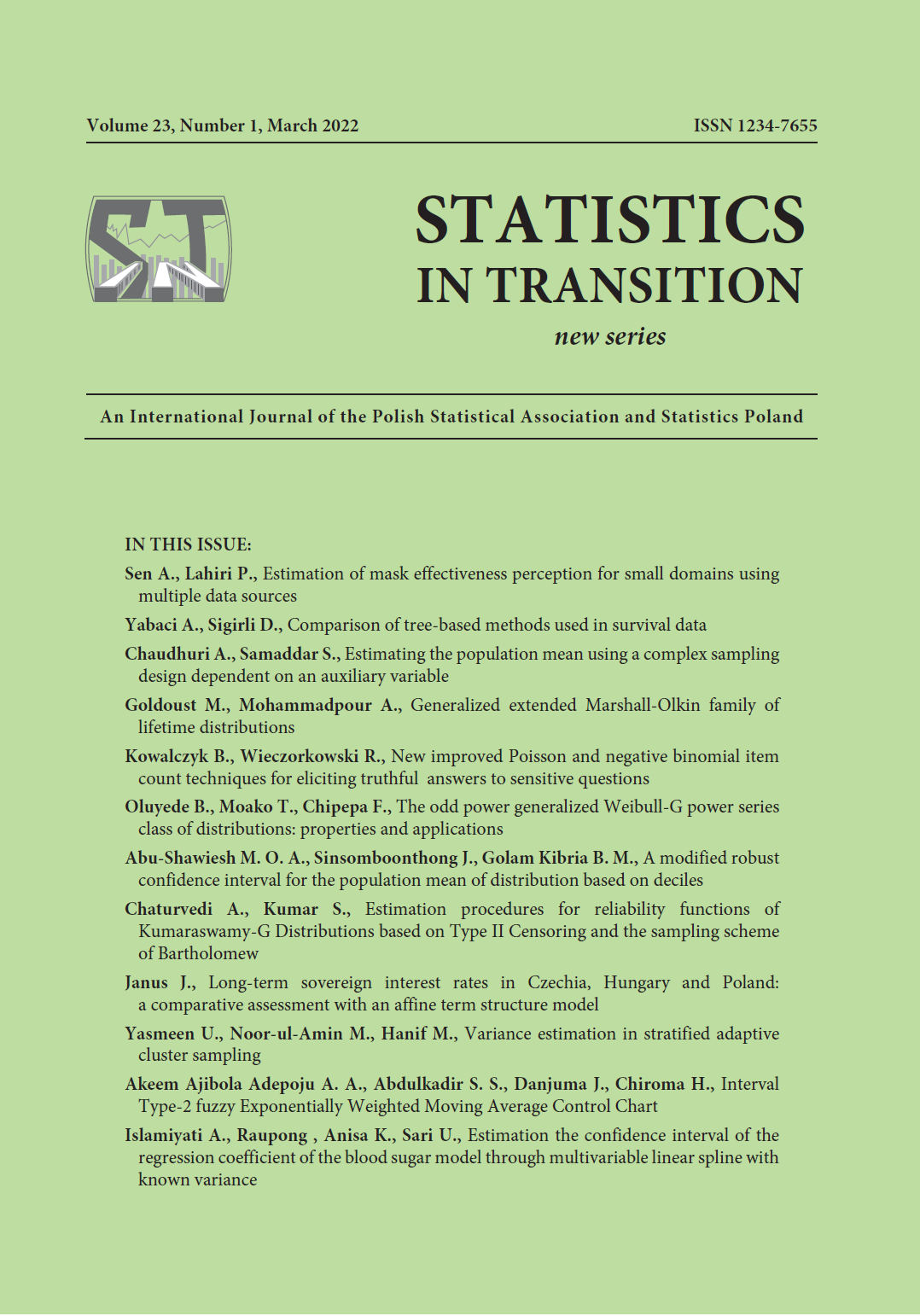ARTICLE
ABSTRACT
In many sampling surveys, the use of auxiliary information at either the design or estimation stage, or at both these stages is usual practice. Auxiliary information is commonly used to obtain improved designs and to achieve a high level of precision in the estimation of population density. Adaptive cluster sampling (ACS) was proposed to observe rare units with the purpose of obtaining highly precise estimations of rare and specially clustered populations in terms of least variances of the estimators. This sampling design proved to be more precise than its more conventional counterparts, including simple random sampling (SRS), stratified sampling, etc. In this paper, a generalised estimator is anticipated for a finite population variance with the use of information of an auxiliary variable under stratified adaptive cluster sampling (SACS). The bias and mean square error expressions of the recommended estimators are derived up to the first degree of approximation. A simulation study showed that the proposed estimators have the least estimated mean square error under the SACS technique in comparison to variance estimators in stratified sampling.
KEYWORDS
variance estimator, stratified sampling, stratified adaptive cluster sampling (SACS).
REFERENCES
Boomer, K., Werner, C., Brantley, S., (2000). CO2 emissions related to the Yellowstone volcanic System, J. Geophys. Res., 105(B5), pp. 10817-10830.
Chandra, G., Tiwari, N., & Nautiyal, R., (2021). Adaptive cluster sampling-based design for estimating COVID-19 cases with random samples, Current Science (00113891), 120(7).
Chao, C. T., Dryver, A. L., Chiang, T. C., (2011). Leveraging the Rao-Blackwell Theorem to improve ratio estimators in adaptive cluster sampling, Environmental and Ecological Statistics 18, pp. 543-568.
Cormack, R. M, (1988). Statistical challenges in the environmental sciences, A Personal view, Journal of the Royal Statistical Society: Series A, 151, pp. 201-210.
Das, A. K. , Tripathi, T. P., (1978). Use of auxiliary information in estimating the finite population variance, Sankhya, 40, pp. 139-148.
Dryver, A. L.,Chao, C. T., (2007). Ratio estimators in adaptive cluster sampling, Environmetrics, 18, pp. 607–620.
Isaki, C. T., (1983). Variance estimation using auxiliary information, Journal of the American Statistical Association, 78, pp. 117-123.
Shabbir, J., Gupta, S., (2010). Some estimators of finite population variance of stratified sample mean, Communications in Statistics–Theory and Methods, 16, pp. 3001-3008.
Subramani, J, Kumarapandiyan, G., (2013). Estimation of variance using known coefficient of variation and median of an auxiliary variable, Journal of Modern Applied Statistical Methods, 12, pp. 58-64.
Tailor, R., Tailor, R., Parmar, R., Kumar, M., (2012). Dual to ratio cum product estimator using known parameters of auxiliary variables, Journal of Reliability and Statistical Studies, 5, pp. 65-71.
Thompson, S. K., (1990). Adaptive Cluster Sampling, Journal of the American Statistical Association, 85, pp. 1050–1059.
Thompson S., (1991b). Stratified adaptive cluster sampling, Biometrika, 78(2), pp. 389-397.
Thompson, S. K., (2002). Sampling, New York: Wiley.
Yasmeen, U., Noor ul Amin, M., Hanif M., (2018). Exponential Estimators of Finite PopulationVariance Using Transformed Auxiliary Variables, Proceedings of the National Academy of Sciences, India Section A: Physical Sciences.
